Using needlepoint and spray paint to create abstract contemporary art.
Embroidery artist, lecturer and fashion designer Zoe Gilbertson creates energy-filled abstract art using spray-painted canvas with tapestry wool stitches.
Her path into textile art started with an early interest in fashion design and textiles from around the world. She develops her works through experimentation within boundaries and likes to fuse needlepoint hand-stitching with pixelated, digital design to study the interactions between colour and shape.
Zoe created a solo exhibition for Rugby Art Gallery and her work has been featured in XStitch Magazine, Venison Magazine, Handmade UK Magazine, Workbox Magazine and Fubiz. She has also featured as an inspirational artist in the book [easyazon_link identifier=”1782214240″ locale=”UK” tag=”wwwtextileart-21″]Mr X Stitch Guide to Cross Stitch .
In this interview Zoe tells us how she uses her problem-solving skills gained as a performance clothing designer to produce abstract pieces; she works within the set parameters of using a tapestry canvas, creating new solutions to stretch the boundaries of needlepoint design.
Recently she has been using architecture, mountain views and geometric shapes to develop her designs. Her work is strongly linked with memories of time spent with family and friends while completing each piece. She encourages us to experiment and try new approaches, saying she often surprises herself with the results.
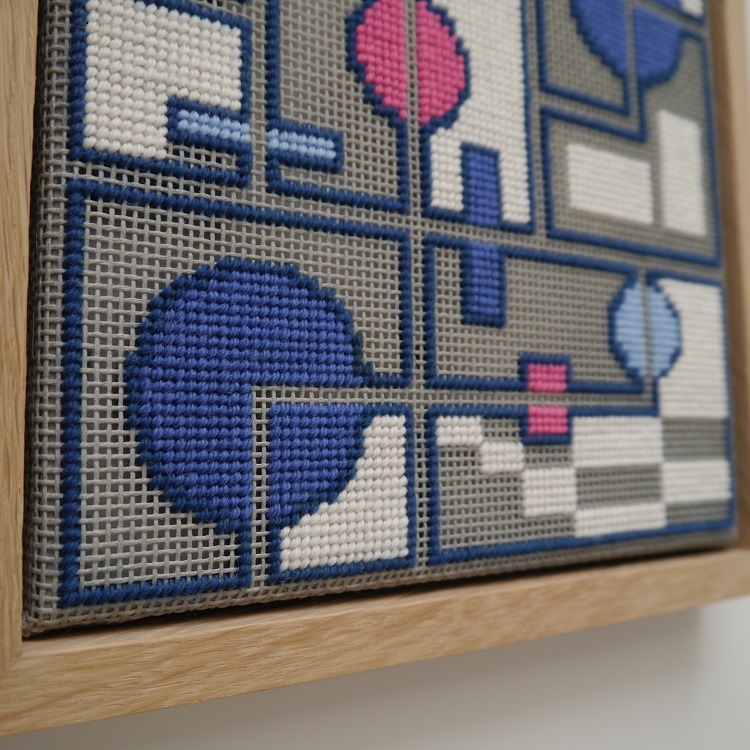
From performance clothing design to abstract needlepoint art
Textileartist.org: What initially attracted you to textiles as a medium? How was your imagination captured?
Zoe Gilbertson: I’ve always had an interest in textiles. I am a fashion designer by trade, working as a performance clothing designer and lecturer in fashion design.
Fashion and textiles are interconnected, and this has led to my interest in textile art. I don’t consider myself a textile artist, although I am often defined as such. I’d prefer to be a regarded as a contemporary artist who uses textile materials to create art.
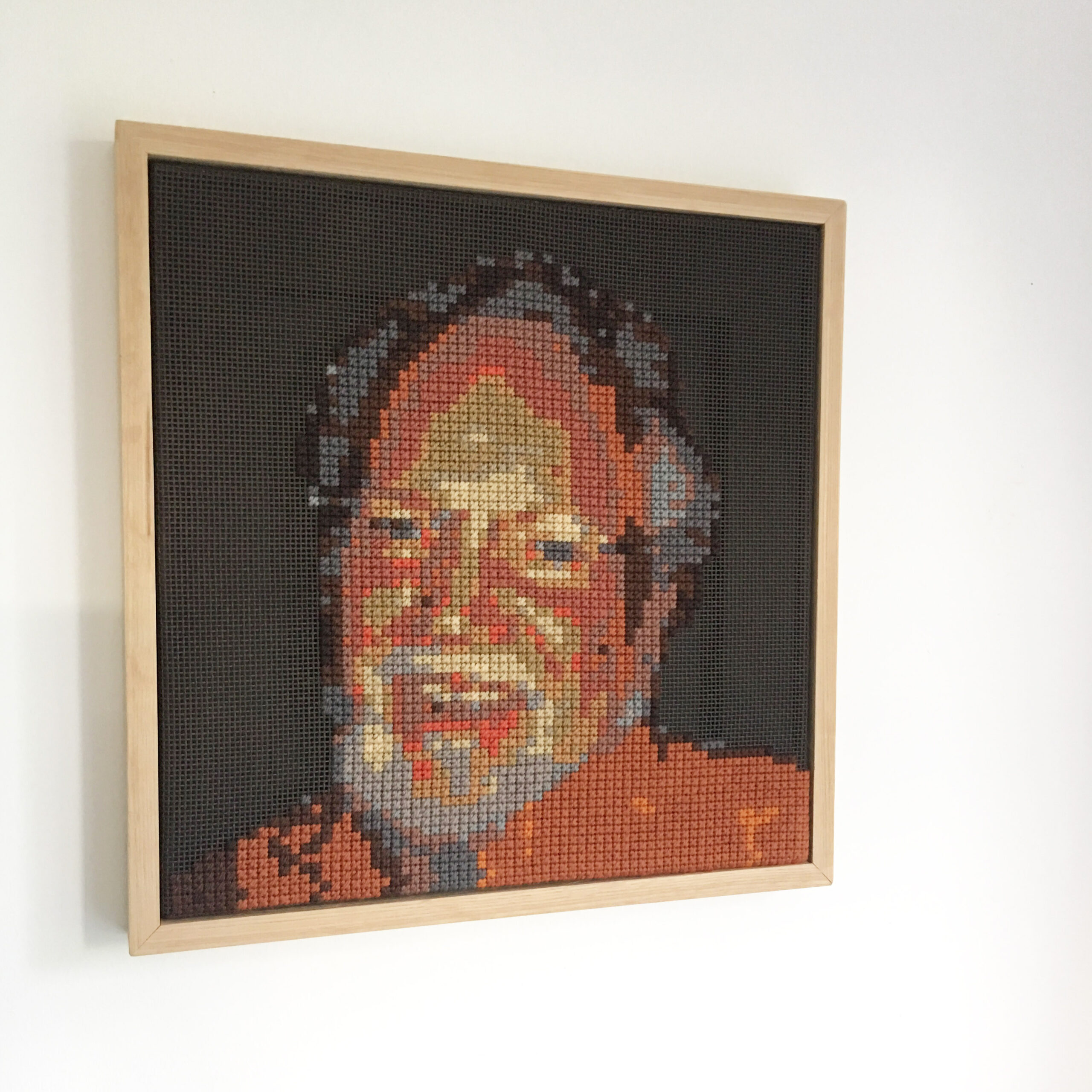
What or who were your early influences and how has your life/upbringing influenced your work?
My Dad started the Fairtrade movement and founded Traidcraft (a fairtrade/craft sales organisation). I used to work there as a child in my school holidays and I was always interested in the textiles they produced in India and other countries.
In the 1980’s Traidcraft started a clothing design department and even as a child I had quite strong opinions about what they should make. I think that provided the spark that led to my career in clothing design.
When I was young, I never thought I was good enough at art. After years of studying hard, I achieved a good art education and a degree in Fashion. I then practiced as a designer for a number of years in various countries. Part of my work involved observing the world’s trends and influences on fashion and this led to my need to constantly search out new sources of inspiration.
My eyes and mind are always open to new ideas. When I worked as a performance clothing designer for Adidas in Germany and MEC in Canada, I enjoyed problem-solving to create garments that fulfil a function, as well as looking beautiful.
In performance clothing design, I work within strict boundaries and set parameters to try and create new solutions to existing problems. I also do this when I create my artwork.
Needlepoint has fairly strict parameters. When you are stitching on a canvas grid, some shapes are impossible to create at a certain scale. This is part of the challenge! I like to think I’m following a philosophy similar to Anni Albers who said “Acceptance of limitations, as a framework rather than as a hindrance, is always proof of a productive mind”.
I also accept my personal limitations as an artist, I’m not an amazing realist painter or renderer but use my creativity to produce interesting concepts, shapes and colours in my artworks.
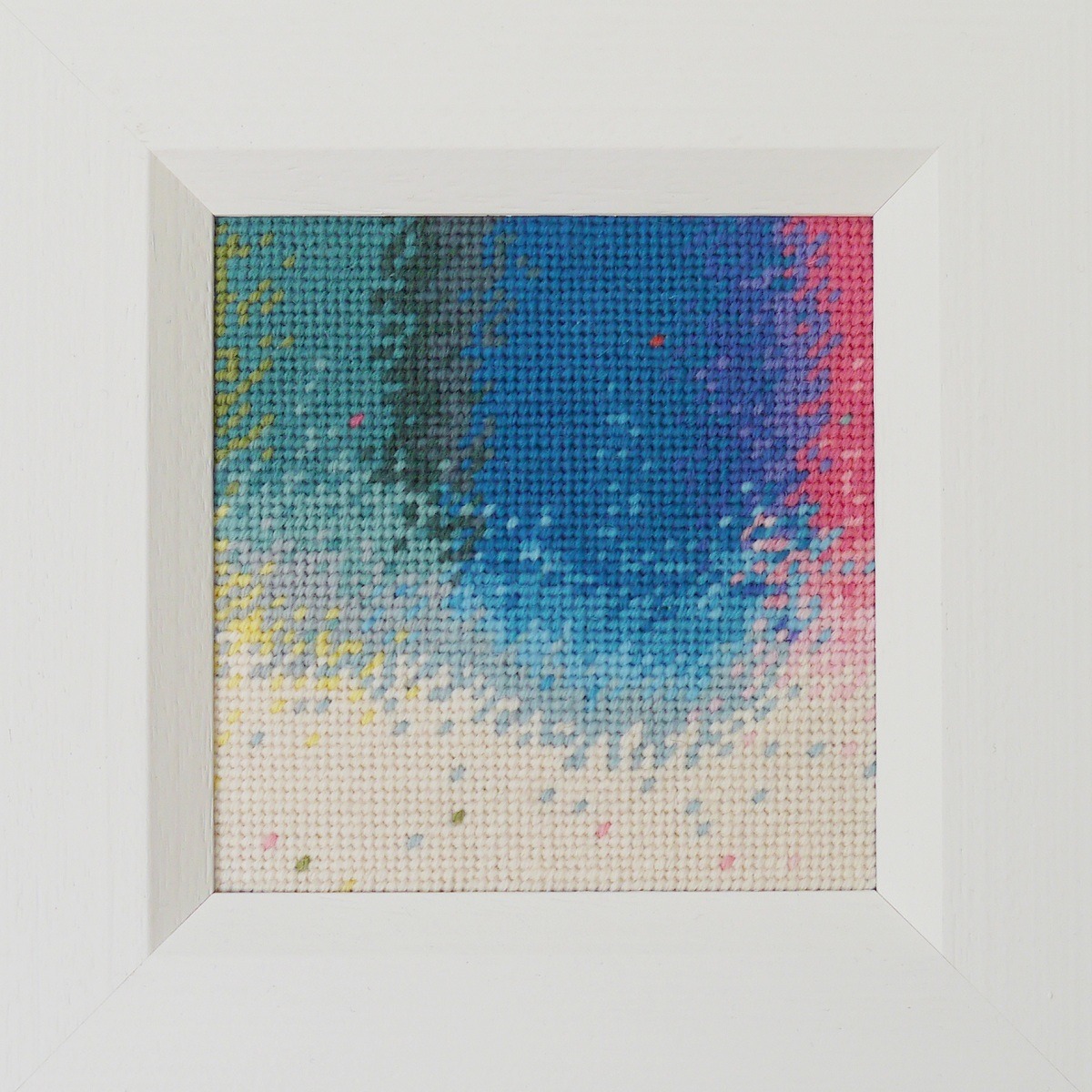
What was your route to becoming an artist?
I’ve always had an interest in contemporary art and interiors and I fell into needlepoint accidentally about ten years ago. I had young children and wasn’t practicing as a designer that much at the time. I missed the creative process.
I made a Bargello piece and was hooked. I loved the fact you could create something and chat or watch television at the same time! I don’t like sitting idle so needlework is perfect for me, being portable and ready to work on at any time.
As soon as I got started I wanted to create artwork and my own designs. Initially, I thought I needed to make money and create a business from it. I felt guilty at the time as I wasn’t working and contributing to the household, which added pressure. I quickly realised this wasn’t the best way forward and now I lecture and run a fashion degree course and create artwork in my spare time.
I don’t want to spoil my enjoyment of creating pieces by placing pressure on myself to earn money. I love doing what I do and plan to keep going for years. I’m happy to tinker and experiment in the background and see what evolves in future.
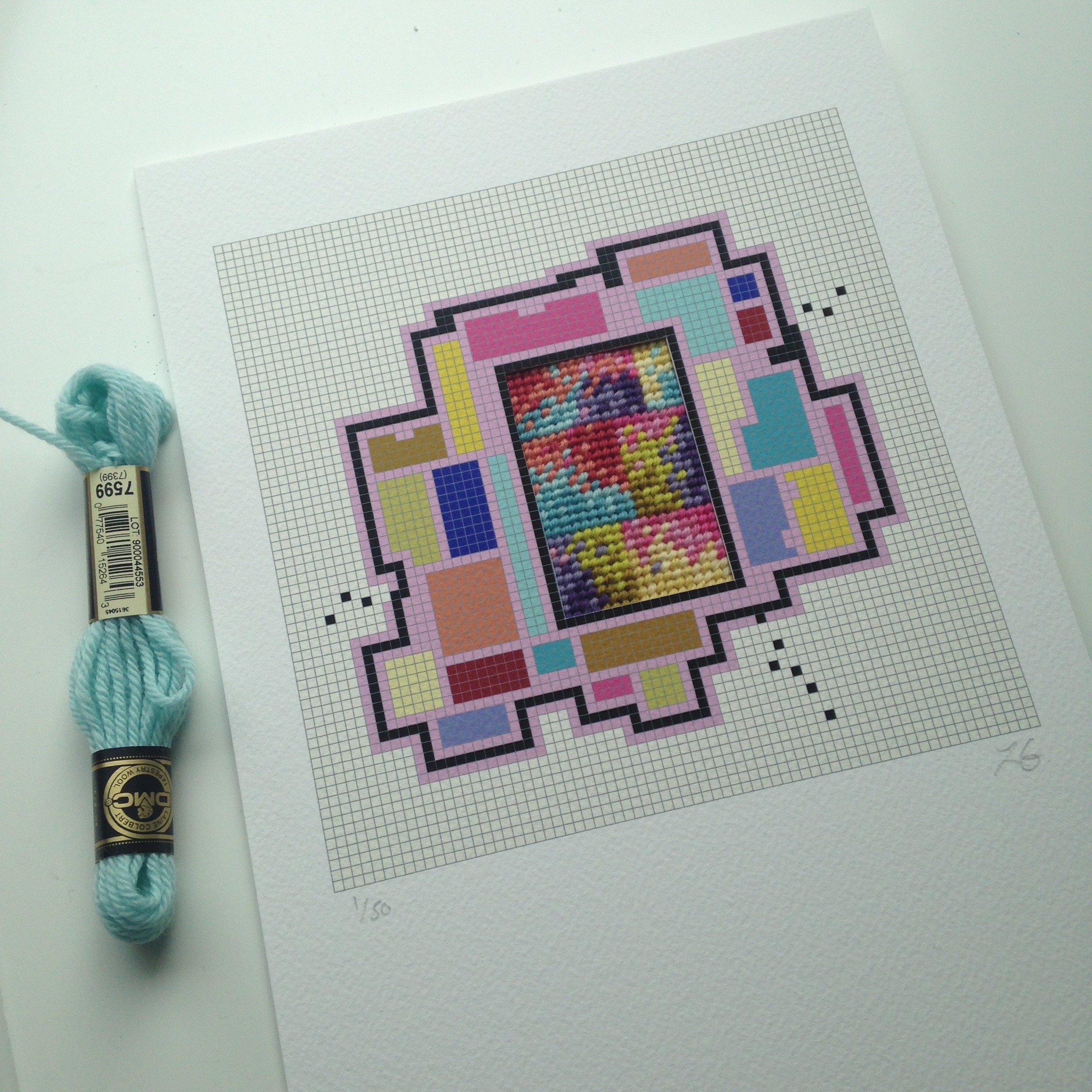
Experimenting with colour and geometric shapes
Tell us about your process from conception to creation
My process varies all the time. Sometimes I design using a stitch program like MacStitch. I also flip between programs such as Adobe Photoshop and Illustrator to create imagery and then import images between programs to get different results.
Other times I scan drawings or paintings and use them as a base. Quite often I have a very vague plan and just start, building the image up as I go.
I have a lot of ideas. Sometimes I wonder if I should focus more in one area to create a stronger style and aesthetic identity, but then I realise that I’m doing this for fun, so I can do what I like!
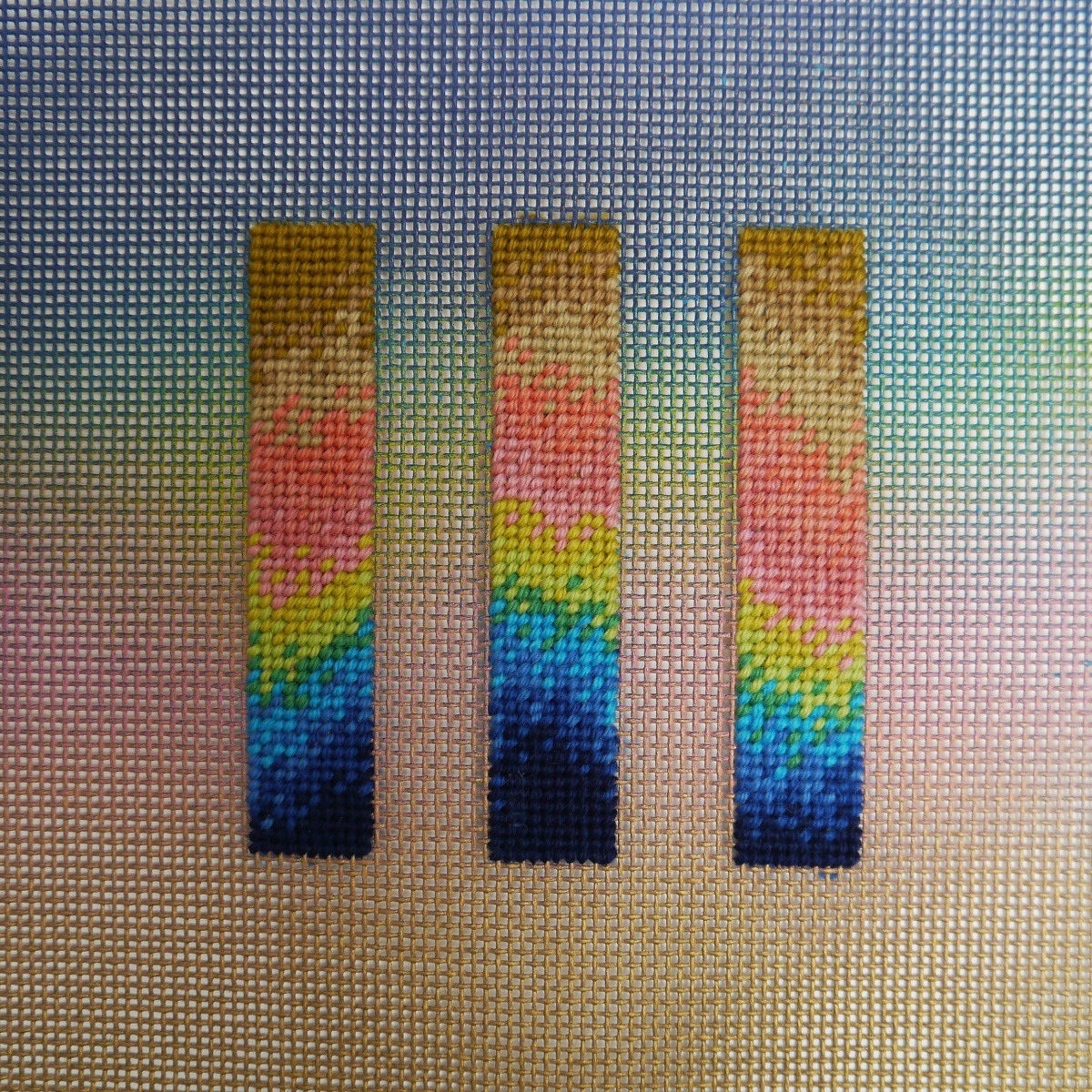
Tell us a bit about your chosen techniques and how you use them
I always use DMC tapestry wool as I find it has the best consistency and the brightest colours. I sometimes spray paint a tapestry canvas to create a gradient of colour in the background. It saves a lot of time and I like the look.
I’ve tried many different ways over the years to frame and display work and have a good process developed now.
My aim has always been to create work that can be considered on the same terms as a painting or more traditional methods of art. Part of this is how it can be displayed, so I’ve spent a lot of time figuring that out.
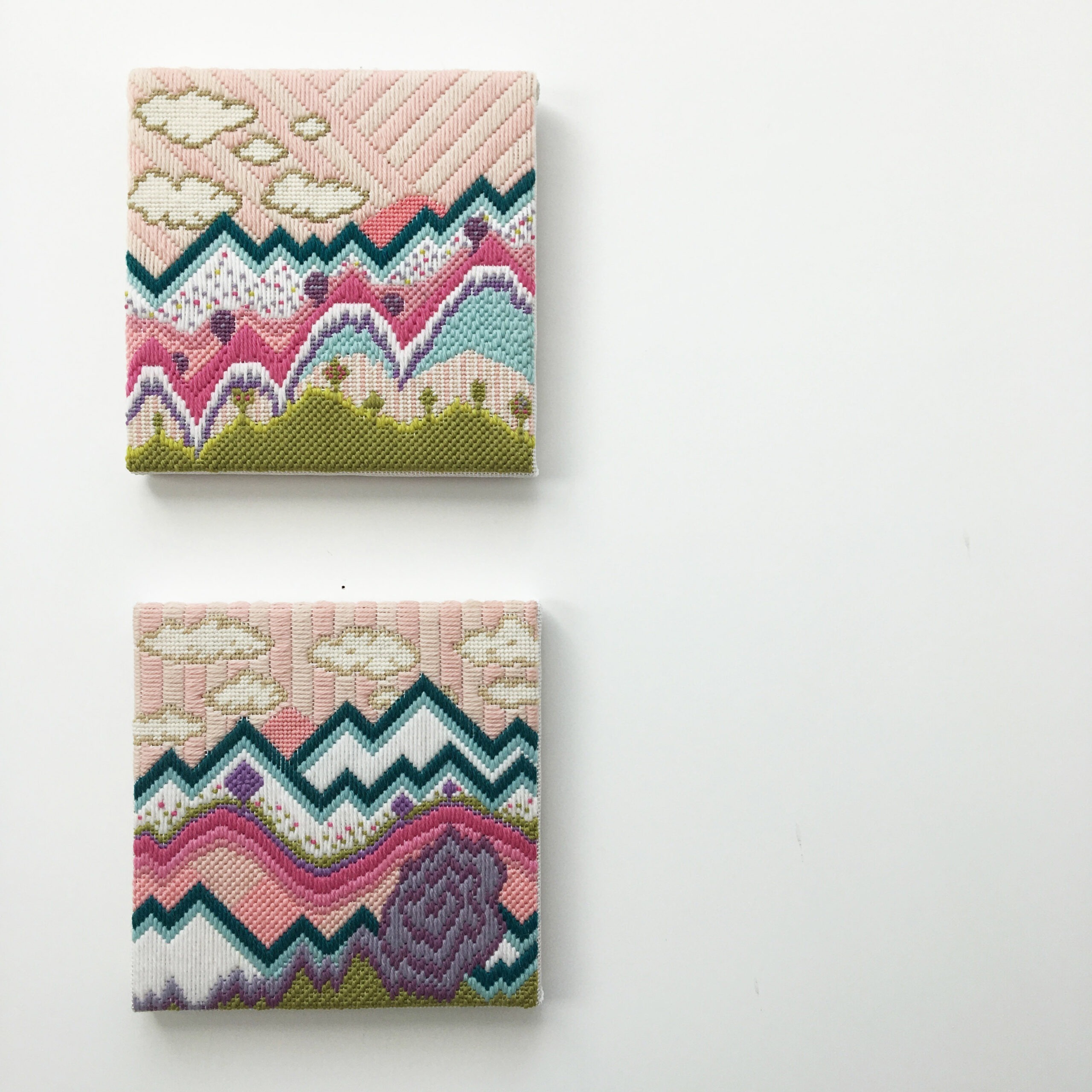
What currently inspires you?
I’m inspired by many sources, often architecture and interiors.
At the moment it’s Milanese 1960’s-80’s doorways and hallways! I’m also interested in mountains and lakes and like to interpret them from a surrealist and geometric perspective.
I read a novel by Leonora Carrington (a surrealist British artist who lived in Mexico) called “[easyazon_link identifier=”0141187999″ locale=”UK” tag=”wwwtextileart-21″]The Hearing Trumpet ” and it was fabulously bizarre. It ended up inspiring three pieces of work that came totally out of nowhere and evolved into something quite interesting with weird mountains – there was no planning behind them other than a colour palette.
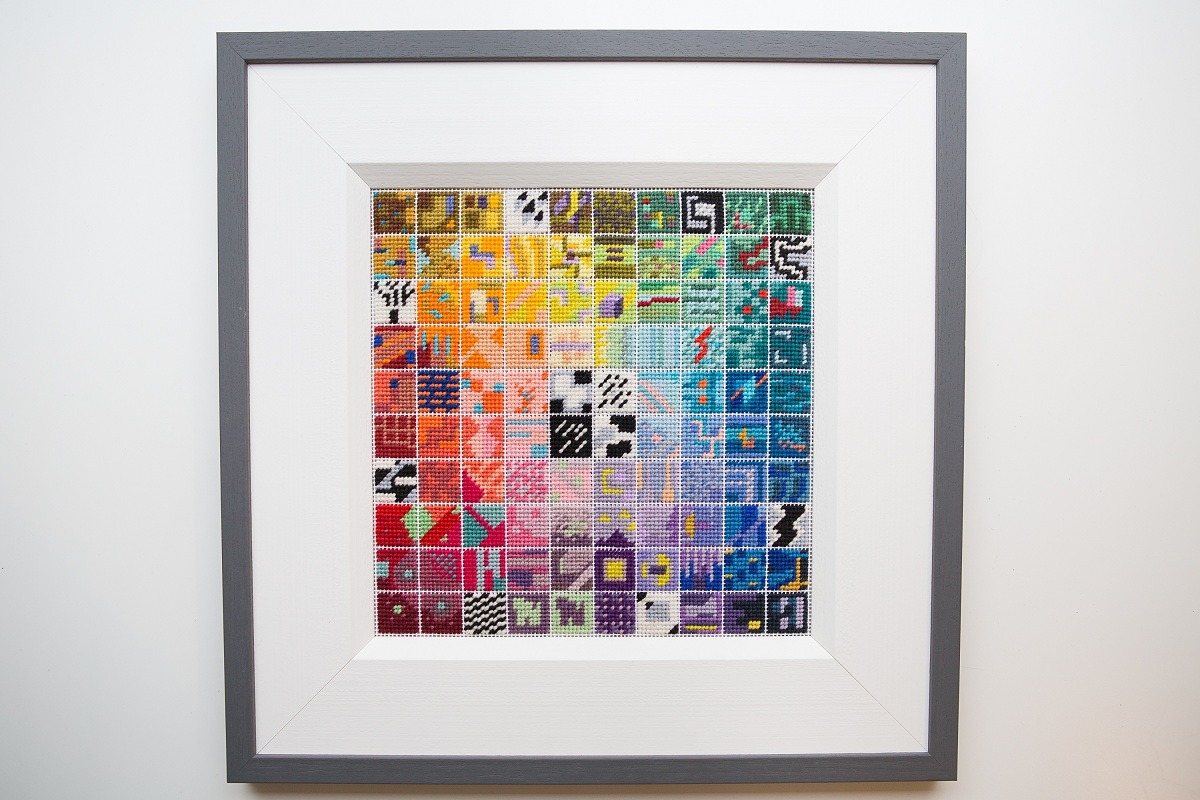
Moving from structured projects to improvisation
Tell us about a piece of your work that holds particularly fond memories and why?
All my work contains fond memories, usually of moments in time with family and friends that are captured within the canvas. I can usually remember what was going on in my life at the time of stitching a particular work.
I think when they take a long time to make, it’s often hard to let pieces go. My 100 Days piece I have to hang onto. About three years ago I had an operation and was going through some other unpleasant treatment at the time.
I needed some creative work which I could do a little of each day, to keep me sane.
I came across the 100 day project online. I chose to create 100 tiny abstract artworks over ten days on one piece of canvas. Each square had 100 stitches in an artwork using 100 colours. I planned the colours a little in advance but generally, it was improvised and each square is unique.
I love the process of improvisation. Prior to that I usually worked from a carefully planned design. Working in this way gave me a lot of confidence over the long term.
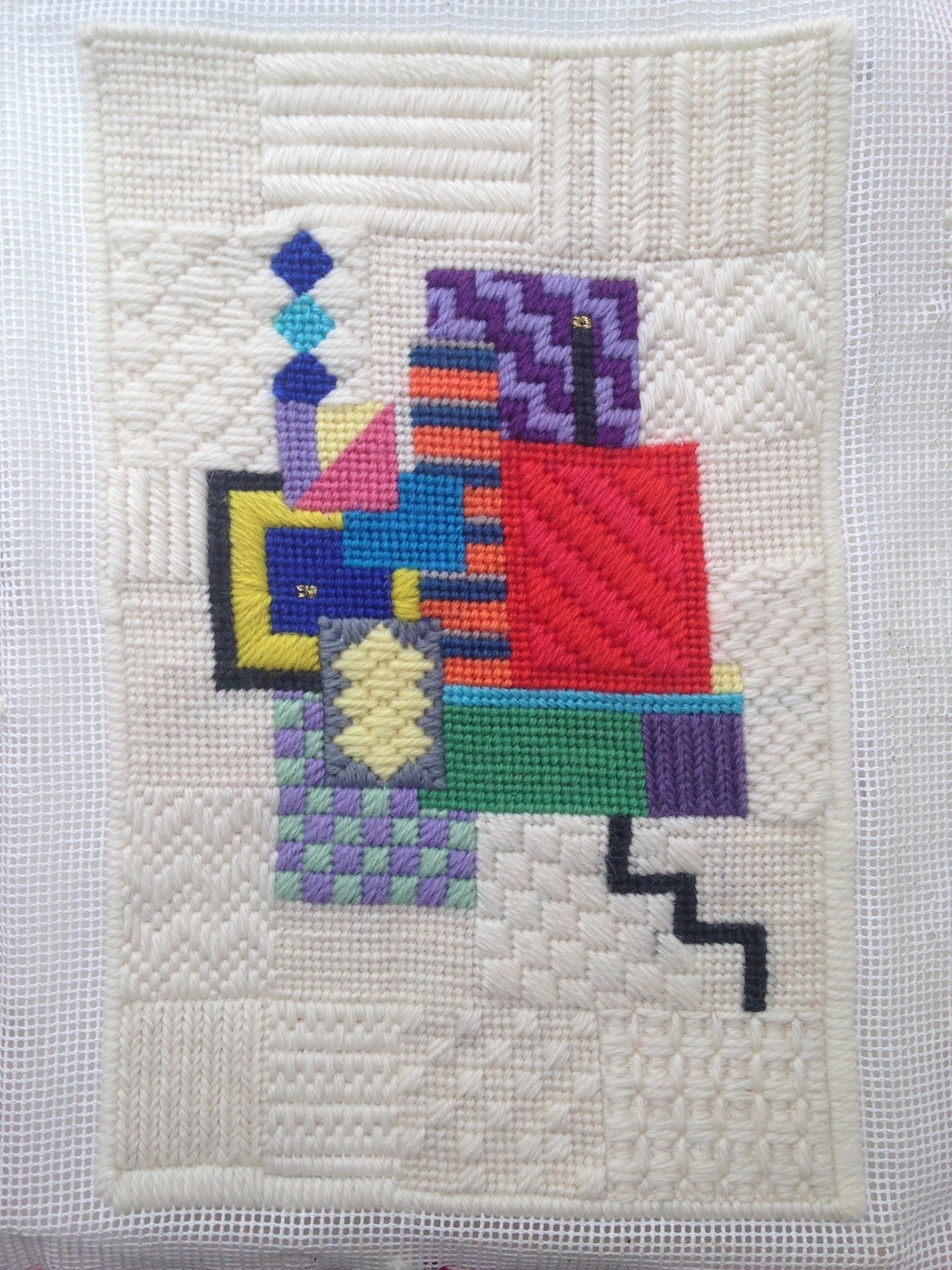
How has your work developed since you began and how do you see it evolving in the future?
My work has evolved in many directions. The first proper piece I ever made is an abstract Mondrian style artwork. It’s still not framed but I love looking at it for reference even now.
I’ve experimented with colour, voids of stitching, ways of framing, methods of stitching and design processes. At the moment I am working more three-dimensionally.
I’ve no idea where I will go with it but I’m happiest when I am experimenting and progressing.
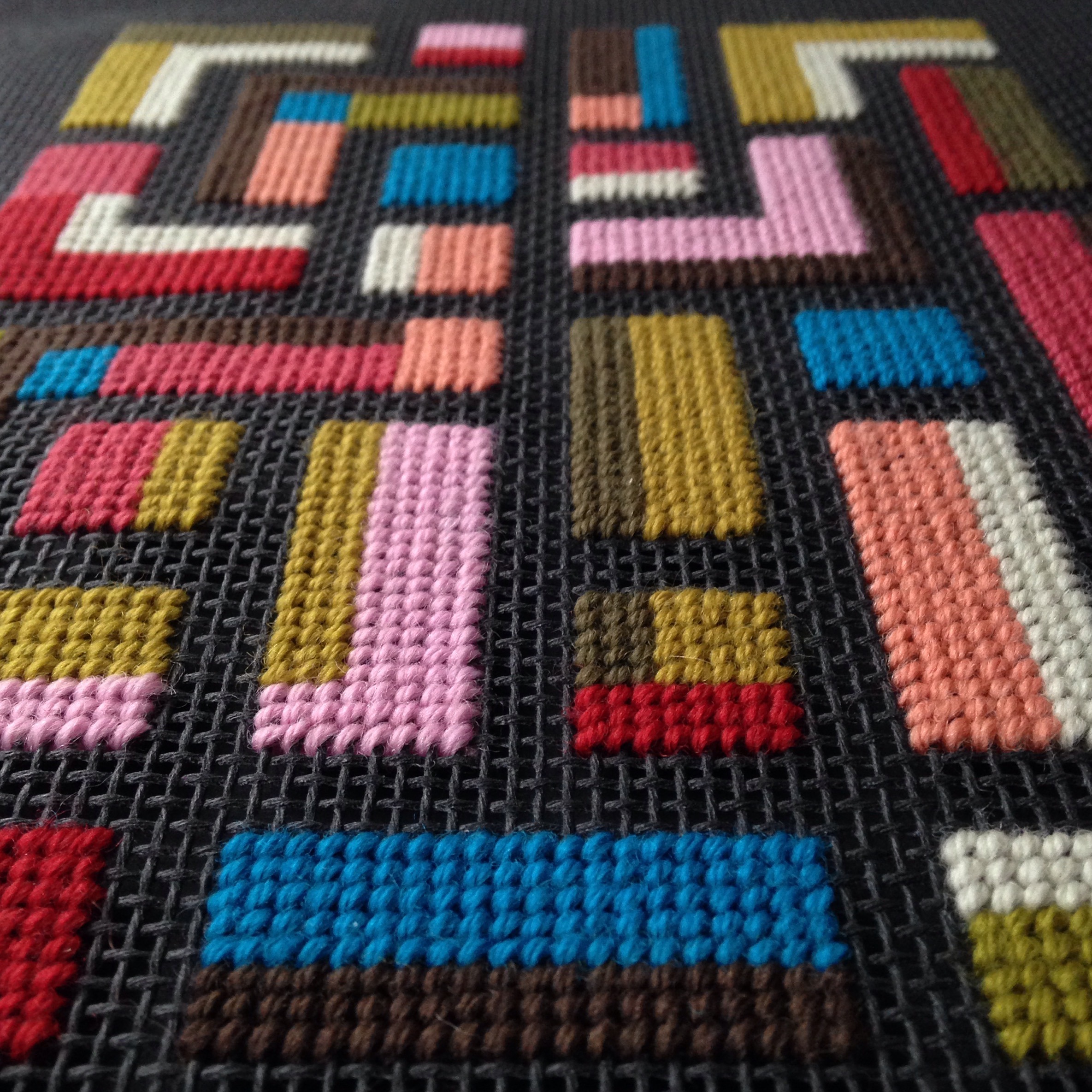
What advice would you give to an aspiring textile artist?
Just do it! Keep pushing and experimenting. Don’t worry about the ‘correct way’ to do things. It is amazing how things can evolve over time.
Break some ‘rules’!
Keep your eyes and ears open all the time and surprise yourself by doing things you normally wouldn’t. I always get the best ideas from doing something completely random and unexpected. Things pop into my brain when I least expect it.
Being bored is often a great catalyst!
For more information visit zoegilbertson.com
Do you like to experiment and break rules with your techniques? Let us know by leaving a comment below.
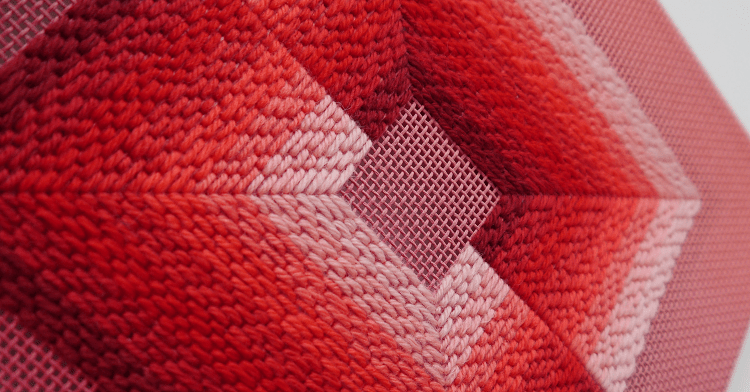
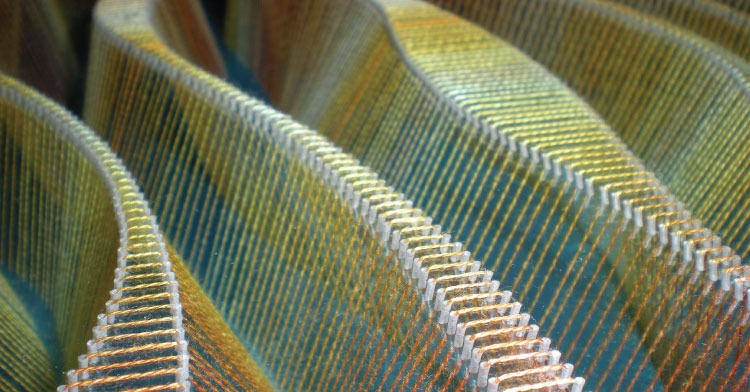
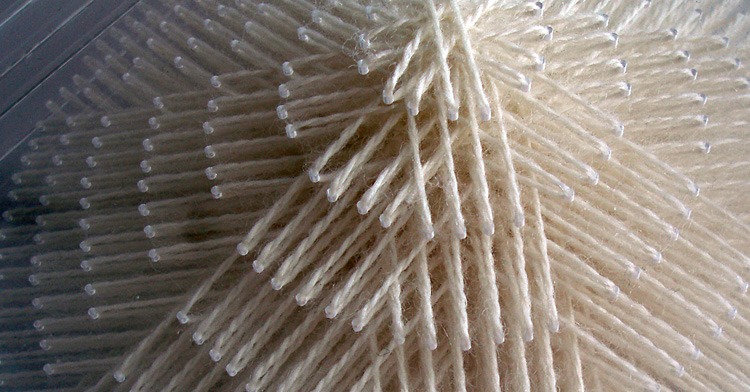
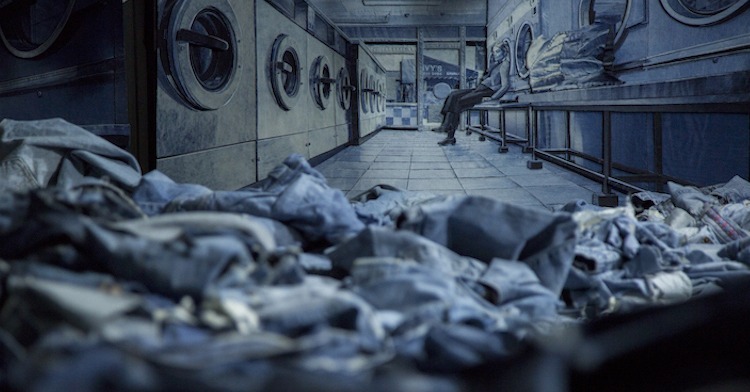
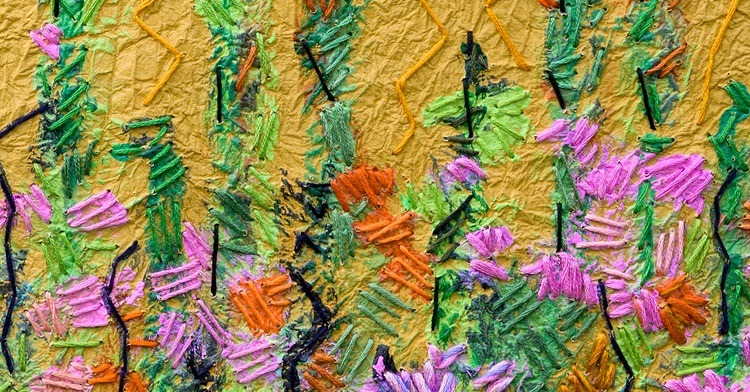
![Contemporary textile artist Lisa Solomon|Lisa Solomon - Sanjusangendo crowns [gold] - detail](https://www.textileartist.org/wp-content/uploads/Lisa1.jpg)
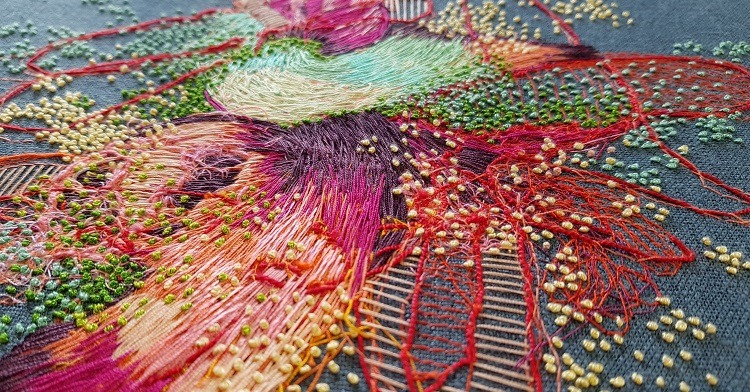
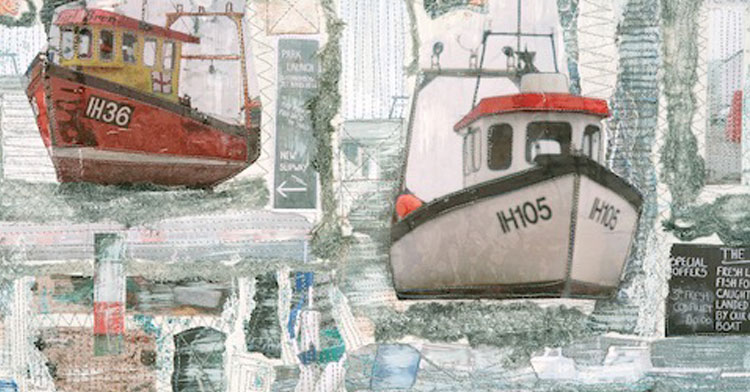
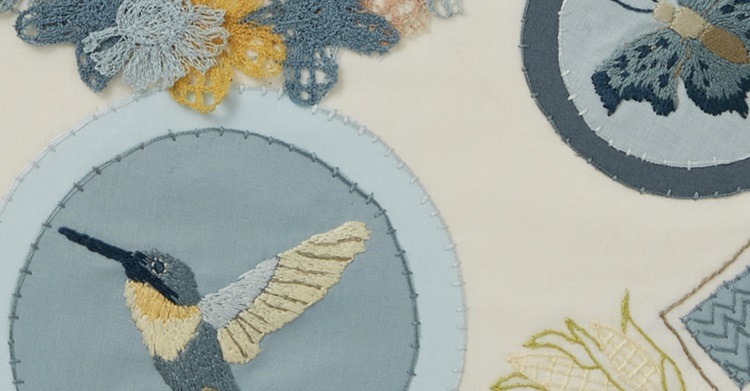
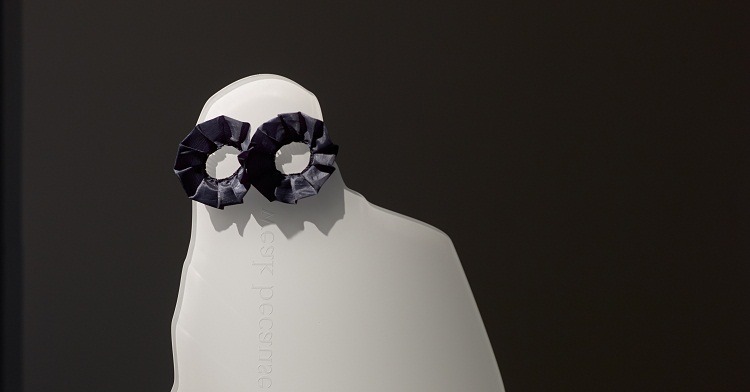
5 comments
Claire Riggall
It’s a joy to see original and free needlepoint, a form of needlework often confined to a printed canvas. It’s also encouraging to me to find it among textile art. I have enjoyed doing needlepoint, both on pre-printed designs and making it up as l go along, but have sometimes thought that other people regard it as a lesser skill. Right now (since May) l am hampered by carpal tunnel and cannot sew at all, sadly.
Dorothy Warner
The no rules, rules. I can be inspired by many artists who go beyond rules. I have learnt to listen to the idea that pops into my brain from nowhere. It turns into a satisfying project. Thanks for all the inspirations.
E K
I especially like the Color Pulse and 100 days. I like your use of colors and contrasts in stitches. Lovely work.
Mary Hutchinson
I also love her attitude to ‘no rules’ – I don’t think you can be really creative and original if there are rules. I invariably change ideas as I go along, how ever hard I try to follow the original plan!
B. J. Adams
Yes,
I have broken many rules and love to do so just to see what will happen. Often I find I like something better than the correct way a material or stitch or design or technique was given to me as a rule. It helps to know what is the correct way to do many things. But, over many many years of learning the “rules” I find that I am often breaking them and the results, to me, are often new ideas that may push me in a different direction.